
Something missing from the Hub?
Is there some research you need to illuminate your character?
Do you have any questions about the production or the period?
This page will be maintained throughout the rehearsal period, and any questions asked will be answered and posted here.
To contact the Dramaturgy Team click HERE
We will endeavour to have all questions addressed and posted within 24 hours.
Questions Asked and Answered
What is the definition of the word "notion"? ANSWERED!
What is validation theory? ANSWERED!
What is the origin of the saying “if ifs and ands were pots and pans, there’d be no need for tinkers”? ANSWERED!
Is to mourn three times actually a sin? ANSWERED!
Groucho Marx? ANSWERED!
After a lobotomy, what happens to one's emotional state? ANSWERED!
In previous staging of Eurydice, whether the grandmother was a character on stage and in what capacity? ANSWERED!
Can we find pictures of luxurious French hotels and their interiors in the 1930's? ANSWERED!
What are common "itch" and "scratch" sayings/meanings? ANSWERED!
Can we find a copy of "The Egg"? ANSWERED!
What is the journey to the underworld, and is there an elevator guy/underworld bellhop in mythology? ANSWERED!
Is there a part of the brain that remembers details, and is there a part of the brain that remembers experiences? ANSWERED!
What is the difference between the Furies and Fates, and are the stones symbolic of these? ANSWERED!
Is there a connection or symbolism in putting a piece of straw in your mouth and death? ANSWERED!
How do you treat people with amnesia? What kinds of amnesia are there? ANSWERED!
In King Lear, is Cordelia alive or dead when the quote about forgiveness is spoken? ANSWERED!
What philosophers were popular during the 1940's? ANSWERED!
What is “The Jitterbug”? ANSWERED!
How are the Furies represented? ANSWERED!
How was Hades perceived? ANSWERED!
What was Sarah Ruhl's father's influence? ANSWERED!
Definitions of Greek Words? ANSWERED!
'Phantom Limbs' and Neurological pathways? ANSWERED!
Words of fatherly advice? ANSWERED!
October 6, 2016
What is the definition of the word "notion"?
We needed a definition of the word “notion” for Eurydice’s monologue in Movement 2, Scene 16. The definition that we decided was the most fitting for this context was,
“an impulse or desire, esp. one of a whimsical kind”
“Notion.” Def. 2e. The Oxford Pocket Definition of Current English. 2009. Print.
Can Dramaturgy look up validation theory? Matt would like to know what it is, and what it is used for.
Validation therapy is a way to approach older adults with empathy and understanding. It is often used to comfort and reassure people who are living with Alzheimer's disease or another kind of dementia. The basic idea behind validation therapy is that people who are in the late stages of life may have unresolved issues that drive their behaviours and emotions. The way caregivers or family members respond to these behaviours and emotions can either make them worse or help resolve them.
Validation therapy is more than simply validating a person's feelings, although that is one component of it. Validation therapy focuses on helping the person work through the emotions behind challenging behaviours. These behaviours are viewed essentially as a way to communicate those emotions, especially in people with memory loss, confusion, disorientation, and other symptoms of dementia.
Who Developed Validation Therapy?
Validation therapy was developed over time, between 1963 and 1980, by Naomi Feil; her first book on validation was published in 1982. Feil is a social worker who grew up immersed in the care of older adults: her mother was a social worker, and her father was the administrator of a nursing home.
How to Use Validation Therapy
Imagine that your mother, who has Alzheimer's disease, lives with you in your home and frequently calls out for her own mother. According to the Validation Training Institute, people who practice validation therapy can use the following techniques in that situation:
- Centre Yourself
- Take a deep breath and slow down. Your initial reaction may be to try to use logic when your own mother, who is 92 years old, starts calling out loudly for her mother. But before you react, think — and breathe.
- Reminisce
- Ask your mother what her mom was like, and what she misses about her. Share a memory about your grandmother with your mother, and allow her to express her loneliness.
- Use Extremes
- Ask her if she always misses her mother, or what she misses most about her mother. This can allow her to process those feelings of grief related to losing her mother.
- Match and Express the Emotion
- Join with the person in her feelings. Acknowledge the sadness of losing her mother and the special relationship they had with each other.
- Rephrase
- Rephrasing her feelings back to her can provide reassurance that you understand and feel her loss. Saying "You must really miss your mother" can decrease her anxiety, because she hears you expressing what she is feeling.
- Use Senses
- Ask questions about her mother. For example, ask about her favourite food that her mother cooked and how it smelled, or how pretty her mother looked all dressed up for church on Sunday mornings.
How Effective is Validation Therapy According to Research?
Research is mixed when it comes to conclusions about the effectiveness of validation therapy. Different studies conducted on validation therapy have different conclusions, with some stating that it's effective, and others determining that it's no more helpful than a placebo.
A couple of Cochrane Database Systemic Reviews conclude there's insufficient evidence to conclude that it's effective — not meaning that it's ineffective, but that there wasn't strong enough data to show that it is clearly helpful.
As a clinical professional, I've seen many instances in which validation therapy has worked very well, and others where it did not. Other clinicians tell of anecdotal evidence of the effectiveness of validation therapy in decreasing challenging behaviours and emotional distress. While there's not a definite conclusion backed by research, it does appear that validation therapy may be a tool that's worth understanding and using in some circumstances, for some people.
What is the origin of the saying “if ifs and ands were pots and pans, there’d be no need for tinkers”?
If ifs and ands were pots and pans, there'd be no need for tinkers...
If ifs and ands were pots and pans, there'd be no work for tinkers' hands...
If wishes were horses then beggars would ride...
If ifs and buts were candy and nuts, we’d all have a merry Christmas...
All of these phrases, in their various states, suggest that wishes, expressed as 'if' or 'but', are fine, but they're not real, and don't achieve much. It posits a fantasy where saying 'if it has been different' was tangible as 'pots and pans', and are so plentiful that there would be no need for tinkers, or travelling figures who make their money fixing damaged pots. According to the Oxford Index, it is a "Traditional response to an over-optimistic conditional expression, in which ands is the plural form of and ‘if’."
The phrase as shown in the play is one version which seems to date from the mid nineteenth century. Early examples include a verse in A Chapter of Ifs, a poem published in 1828 in the New Monthly Magazine:
If Ifs and Ands were pots and pans,
’Twould cure the tinker's cares:
if ladies did not carry fans,
They’d give themselves no airs:
If down the starry skies should fall,
The starlings would be cheap:
If Belles talk'd reason at a ball,
The band might go to sleep.
An earlier version comes from a poem entitled Hans Beudix by the German poet Gottfried August Bürger:
Are you there, my old fox, with your ifs and your ans?
But I need not remind you, they're not pots and pans,
Else tinkers would starve, (as I learnt from my nurse;)
Still the answer shall pass, for it might have been worse.
Looking for a crazy in-depth etymological explanation? We have you covered!
Is to mourn three times actually a sin?
This in-depth examination of mourning in the Bible shows a great deal of insight into this question, based around Matthew 5:4: "Blessed are those who mourn, for they will be comforted." There is nothing explicitly stated about 'three times' being a specific sin, but to extrapolate from what is stated in this Biblical analysis, we must suggest that Ruhl's use of 'three times' as a sin points to a questioning of God's will. We can mourn the loss of a loved one, but if they have moved into the afterlife, they have been elevated. If we mourn the same person three times, we are in essence not accepting God's will, which is in itself sinful. A search for the phrase "mourn three times is a sin" returns only links to Sarah Ruhl, so the phrasing is original.
After a lobotomy, what happens to one's emotional state? What does the brain start to process after that?
The lobotomy is a type of neurosurgery, or surgery performed on the brain, known as psychosurgery. The idea behind psychosurgery is that severe forms of mental illness can be treated by changing the way that the brain works. Doctors believed that by severing the connections that the frontal lobes, or prefrontal cortex, had to the rest of the brain, they could calm patients' emotions and stabilize their personalities without doing away with their intelligence and motor functions.
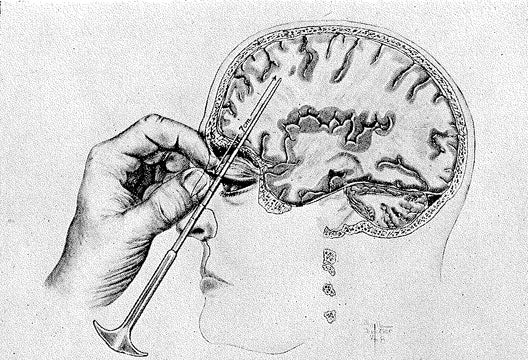
The results of early lobotomies were difficult to interpret, because the people receiving lobotomies were already psychotic, seriously disturbed and out of touch with reality. In the late 1940’s lobotomies were used on a new group: people suffering severe intractable pain: pain unresponsive to any form of treatment. Doctors had noticed that psychotic patients receiving lobotomies no longer complained of pain afterward. So it seemed lobotomies might be useful for people who suffered from pain alone, without any sort of psychological disorder. At first this seemed to be a success. Dynes (1950) wrote, "The patient [after lobotomy] was unconcerned about pain and in practically all instances he was no longer anxious and fearful as he had been prior to the lobotomy."
However, as time went on, some disastrous consequences were discovered. Dynes found that some patients were "slowed up in thinking and acting, they were dull, at times completely lacking in emotional expression or display and showed a striking reduction in interest and driving energy." Others receiving the same operation were "uninhibited and euphoric and they were somewhat restless with a purposeless type of activity."
Lobotomy patients were said to act stimulus-bound. They reacted to whatever was in front of them and did not respond to imaginary situations, rules, or plans for the future. Many of the patients became fat. If food was set in front of them, they ate, hungry or not. Some of the patients grew sexually promiscuous; they pursued immediate gratification without regard for consequences. Few of the lobotomy patients could plan effectively for the future or sustain goal-oriented activities. A goal requires that complicated plans be held in mind, and this was evidently beyond the capacity of lobotomy patients, who tended to be distracted by immediate stimuli.
Soul Surgery: Successes and Failures in Lobotomy Patients
In previous staging of Eurydice, whether the grandmother was a character on stage and in what capacity? Are there dramaturgical notes about why she cut the grandmother? What role did she serve in the play? What are the revisions of Eurydice? Why would the grandmother be in the play?
Some good insight from the Dear Eurydice blogspot, on the grandmother character:
An earlier draft of Eurydice had two additional characters, both played by the same actress: Eurydice’s Grandmother (The Father’s Mother) and Old Woman (The Voracious Mother of the Child.) The Grandmother wanders around the Underworld and no one really notices. She seems to represent the blissfulness of complete forgetfulness.
Here’s what Ruhl said about the Grandmother character:
Q: The idea of memory as something that can be washed away and painfully retrieved is a compelling idea in Eurydice. Would you address the final moments of the play when we see Eurydice’s grandmother, another occupant of the underworld who has experienced erasure of memory?
A: I was looking for metaphysical layering, so that we would see someone who has completely lost her memory. The grandmother takes walks across the stage that are like little silent plays unto themselves and can be really specific. Some actors would balk at not having her encoded in language, not having a certain amount of lines. But having the grandmother make that last cross gives the play emotional balance. It’s not as tidy or as Greek as the tragedy would be if we just saw Orpheus coming down and the triangle between Orpheus, Eurydice, and the father. It’s larger, it’s continual—life does go on. The grandmother becomes an emblem of memory loss as sort of a happy thing. I’ve seen some people lose their memory who have been quite happy in the void they’re moving into, but for other people who are aware of it, it’s so horrible and tragic and painful. For Eurydice and her father the pain comes out of their consciousness of memories, but the grandmother is less conscious of what’s slipping away. She’s more peaceful, which for me makes her less ambivalently hopeful.
The Grandmother character is now gone, but she seems to be the forerunner to the old crone stone as conceived by director Lisa Hall-Hagan. She is someone who has been around the underworld the longest and who most represents the idea of peace and forgetting.
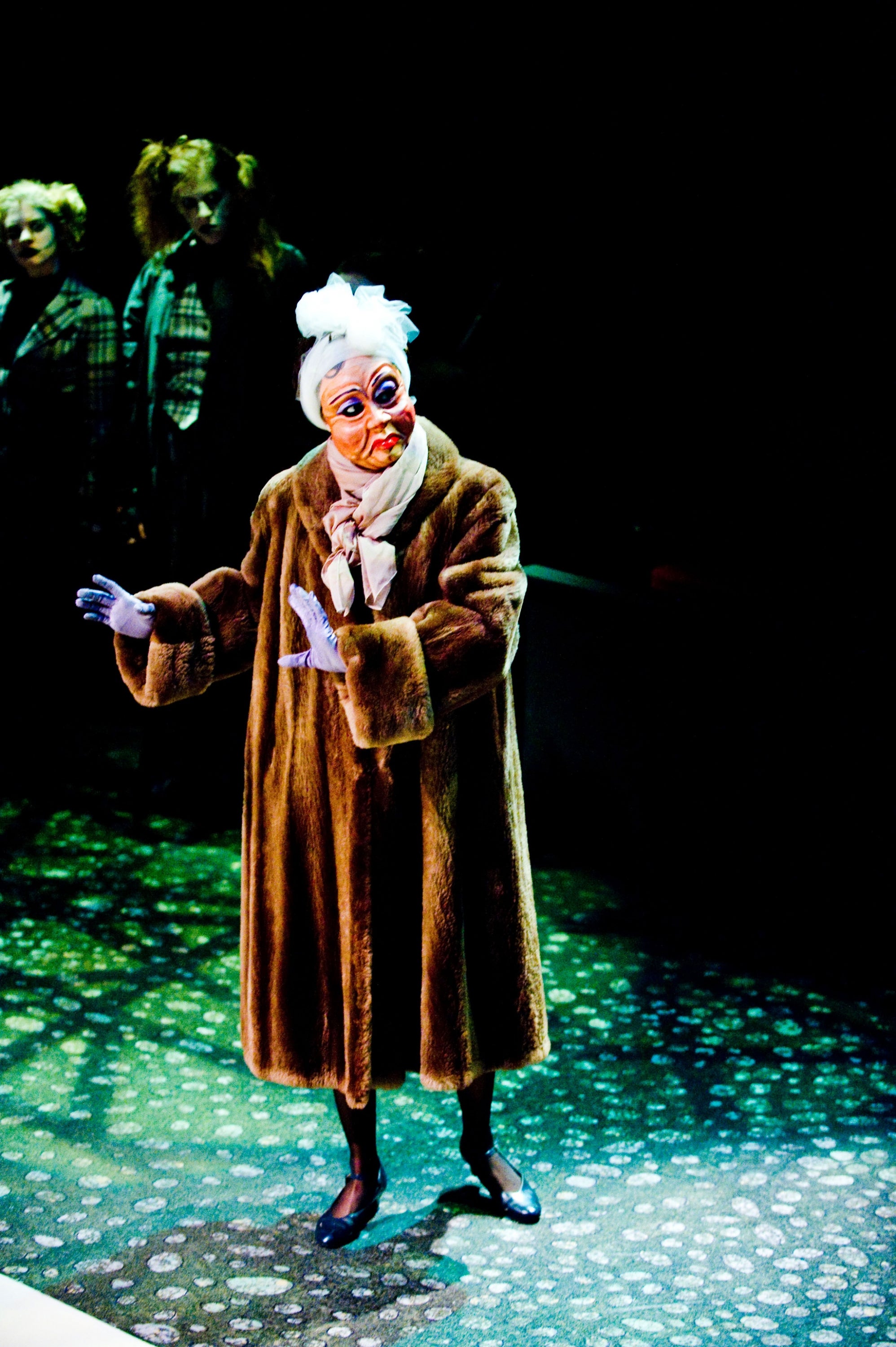
The Grandmother character in a 2015 production at the University of Vermont (above)
Amber McGinnis Jackson, MFA, wrote on the staging of Eurydice in her Master's thesis at Baylor University. She offers this insight:
In the fall of 2004 Eurydice would receive its second professional production at Berkeley Repertory Theatre under the direction of Les Waters, who had been given the script by Ruhl’s former Brown professor (and fellow Greek-adapting playwright) Charles L. Mee. It was in this Berkeley production that Ruhl would change the play into its present form by cutting two characters. The roles of Eurydice’s grandmother and the mother of the lord of the underworld—meant to be played by a single actor—“befuddled” Waters (“Talk With Sarah Ruhl”). Many other directors had shared this concern, including Daniel Fish, who had cut the character from his February 2004 production at the University of California, San Diego. Ruhl explains, “in terms of how the story was progressing, people weren’t understanding how the character was moving through the play. So, I thought, well, I’ll try it without, and when we tried it without it actually had more of a flow in terms of the story” (“Talk with Sarah Ruhl”). The original version of the script as produced at Madison Repertory Theatre is available in a 2004 issue of Theatre Journal, as well as in the 2005 book, Divine Fire: Eight Contemporary Plays Inspired by the Greeks. The most recognized and produced version of the play includes this cutting of the grandmother and mother of the lord of the underworld. This text can be found in the Sarah Ruhl anthology published by Theatre Communications Group in 2006 and in the 2008 actor’s edition published by Samuel French.
Can we find pictures of luxurious French hotels and their interiors in the 1930's? What were popular vacation destinations in the 1930's in France? Where would couples commonly elope?
There are limited photographs available of French Hotels in the 1930's. Depending on the luxurious hotel, the lobby would be furnished either in art deco or late 1800's interior fashion.

A fashionable vacation destination in the 1930's was the French Riviera.

Ritz Paris:

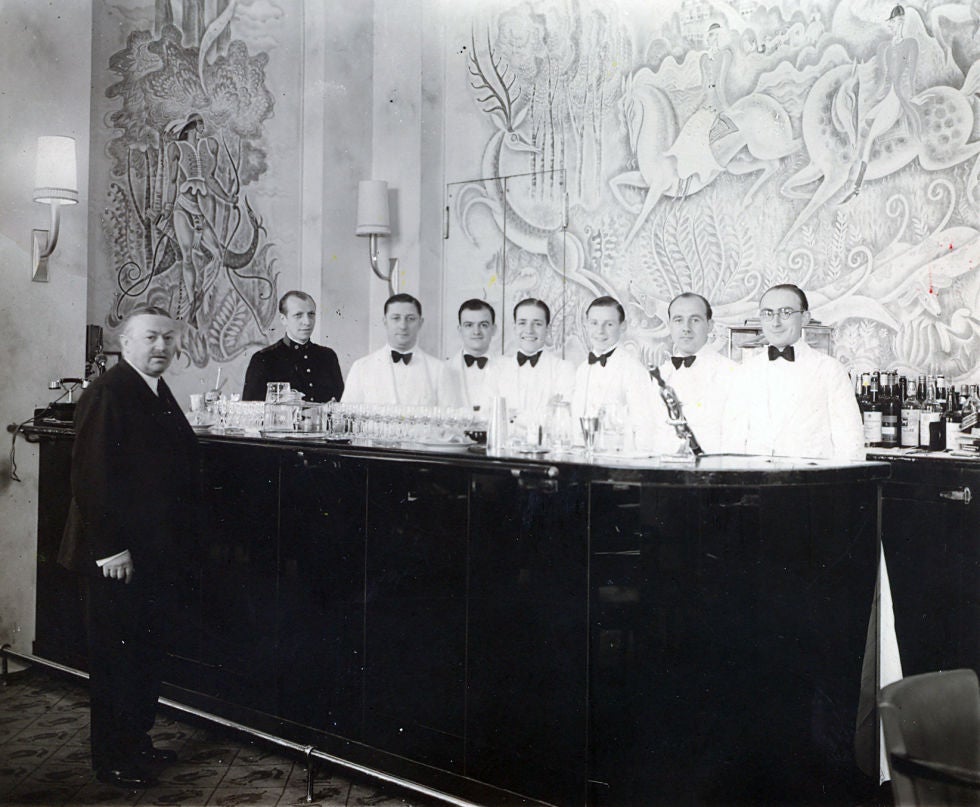


What are common "itch" and "scratch" sayings/meanings?
Beyond the physical sensation, an "itch" is an idiom used to describe a desire for something. Similarly to our innate mechanism, a "scratch" is therefore the idiom for the need to satisfy the desire. A popular phrase is "the seven year itch". This refers to a "supposed tendency toward infidelity" after seven years of marriage.
Some quotes:
"One learns to itch where one can scratch." This is a reference to the need for learning and the ability to learn by Scott Green.
"Unanswered questions make my head itch." This references a continuously curious mind by Kerry Greenwood.
"When once the itch of literature comes over a man, nothing can cure it but the scratching of a pen. But if you have not a pen, I suppose you must scratch any way you can." -Samuel Lover
Some proverbs:
"A quarrel is like an itch; the more you scratch, the more it itches." A Yiddish Proverb
"To eat and to itch is in the beginning." A Portuguese proverb
"What gives the child the itch has already given him the fingernails for scratching it." -Igbo Proverb
"When the itch is inside the boot, scratching outside provides little consolation." Chinese proverb
Can we find a copy of "The Egg"?
This is a short story by American writer Andy Weir that went viral. There are many video adaptations available online.
Here is the original from the writer's website.
What is the journey to the underworld, and is there an elevator guy/underworld bellhop in mythology?
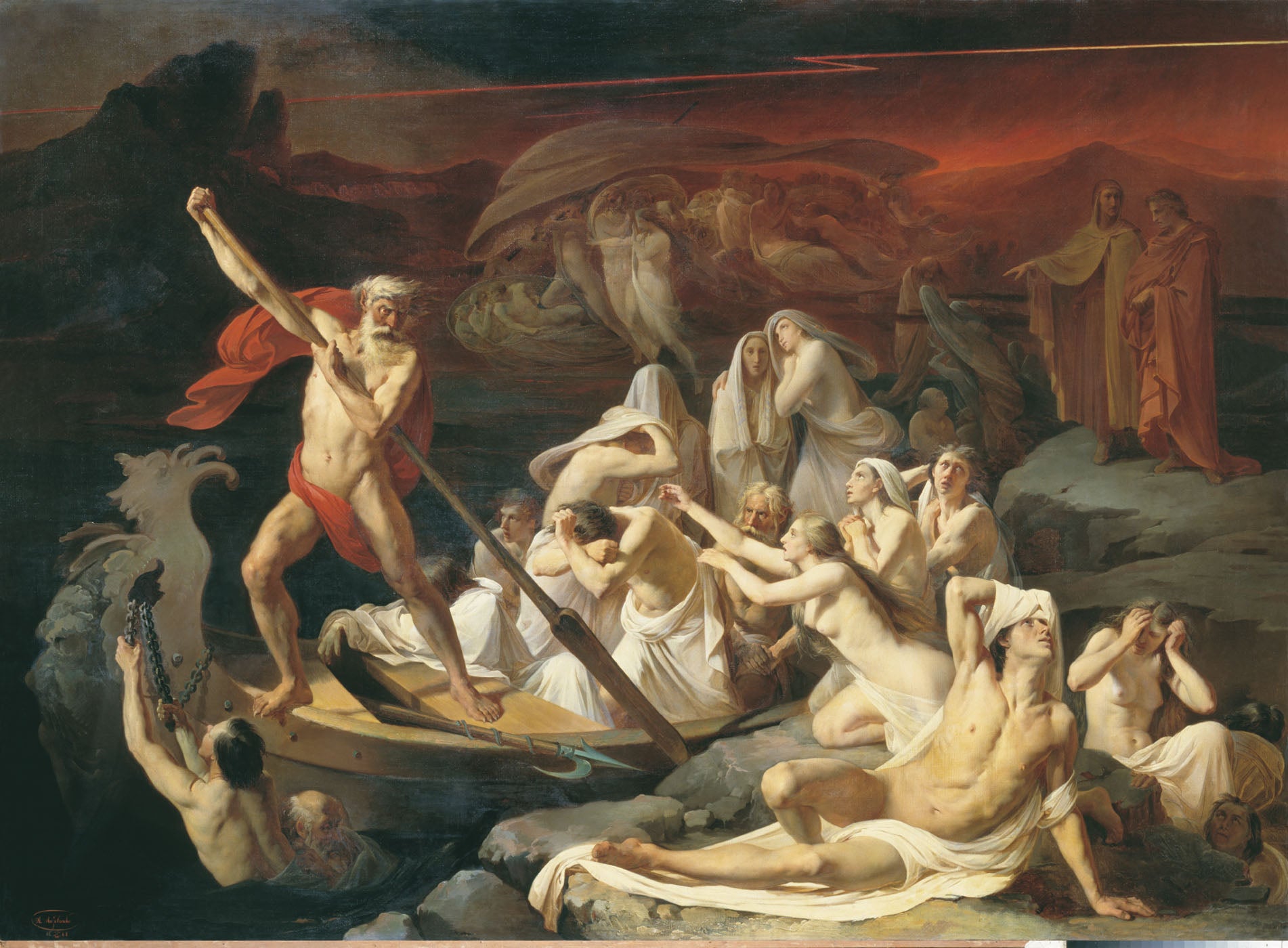
It was believed that when a person died, if they received a proper burial, Hermes would come gather their soul and lead them to Charon. Charon, is the ferryman for the underworld. Charon ferried the dead souls over the River Styx. His fee was one silver coin what was placed in the mouth of the corpse at burial. If no one put a coin in the mouth of the deceased person, it was said that the soul would journey the shores for a hundred years. Charon would also take the living to the underworld but he charged significantly more given the fact that they needed two trips. Several stories indicated that the living would give Charon a golden branch to cross the river and then return.
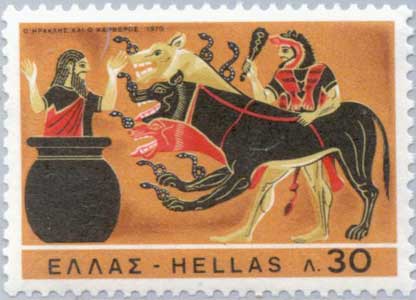
After crossing the river, Kerberos, a three-headed dog with serpents coming out its body, stood guard at the gates of the underworld. Kerberos was more concerned with keeping souls in rather then out. Once in the underworld, souls would face judgement on their actions of when they were alive. The judges were Minos, Rhadamanthys, and Aiakos. Souls that led good lives were taken to drink out of the river of Lethe to forget all bad things and then taken to the idyllic Elysian Fields. Souls that led bad lives were put in the hands of the Furies who would take them to receive punishment for their actions at Tartarus, the lowest level of the underworld. The worst offending souls that offended the gods were condemned to eternal torment.
Is there a part of the brain that remembers details, and is there a part of the brain that remembers experiences?
Long-term memory can be divided in the two main types; Declarative and Procedural memory. Declarative memory is the memory of facts and events whereas Procedural memory is the unconscious memory of skills and how to do things.
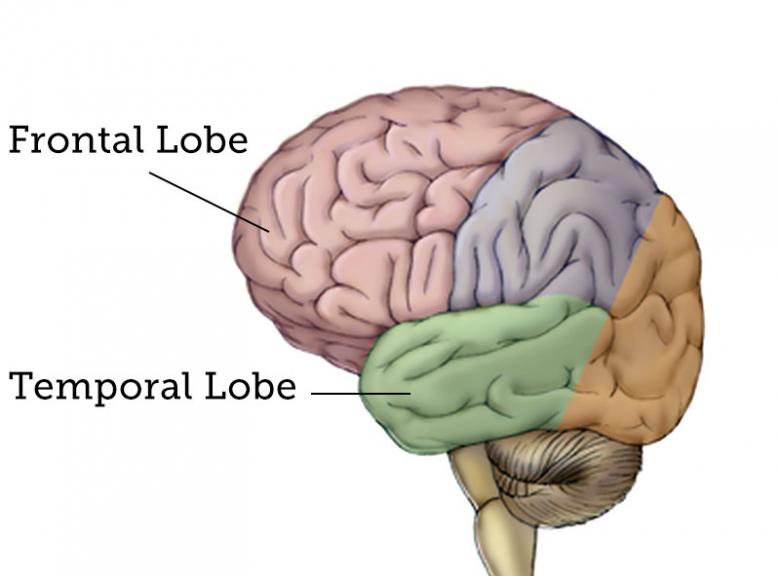
Declarative memory has two sub-categories. Episodic and Semantic Memory. Episodic memory represents our memory of specific experiences and events. It is responsible for autobiographical events. When recalling these memories, people tend to see themselves as an actor in these events. Emotion play a big part in the encoding and recalling process of declarative memory. The memories do not just include the bare facts, but also the context and emotional charge of the memory. On the other hand, semantic memory is more a record of facts, knowledge, meanings, and concepts about the outside world. These semantic memories may have had personal context at one time, but now stand alone independently as just simple knowledge.
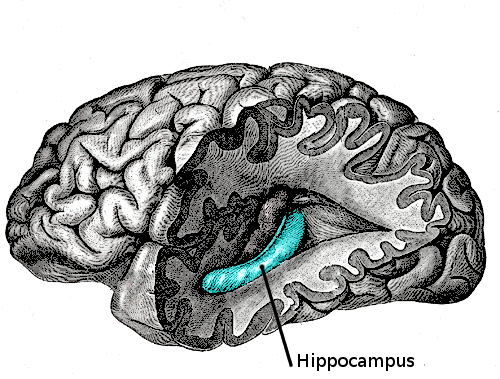
Semantic memory mainly activates the frontal and temporal cortexes. Episodic memory is concentrated in the hippocampus initially. Episodic memory is then consolidated and stored in the neocortex. The different elements of a particular memory are then stored in the visual, auditory, and olfactory parts of the brain but remain connected through the hippocampus to form an episode, rather than being a collection of different memories.
September 23, 2016
My question is in relation to the stones and their relationship to either the Furies or the Fates.
Can you do research on the Fates in Greek mythology and the difference between the Furies and Fates. Has Sarah Ruhl said anything about if the Stones are symbolic of either the Furies or Fates?
The Fates and the Furies are mythological characters. The Fates and the Furies are not one of the 12 gods and goddess. The Furies are three sisters. They are monsters of Greek mythology. The Furies punish the guilty in the Underworld.
The Fates are the ones that have the power of deciding a man or womens destiny. The Fates assign a man or women to good or evil. The Fates choose how long a man or women lives. There are three Fates. Clotho, the spinner, who spins the thread of life. Lachesis, the measurer, who chooses the lot in life one will have and measures off how long its to be. Atropos, she who can't be turned, who at death with her shears cuts the thread of life.
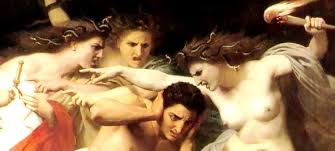
-
The three goddesses of vengeance and retribution who punished men for crimes against the natural order.
-
They live in Erebus and are more ancient deities than any of the Olympians.
-
Their task is to hear complaints brought by mortals against the insolence (rude disrespectful behavior) of the young to the aged, of children to parents, of hosts to guests, and of householders or city councils to suppliants - and to punish such crimes by hounding culprits relentlessly.
-
Are crones and, depending upon authors, described as having snakes for hair, dog's heads, coal black bodies, bat's wings, and blood-shot eyes. In their hands they carry brass-studded scourges, and their victims die in torment;
-
They were particularly concerned with homicide, unfilial conduct, offenses against the gods, and perjury.
-
The most powerful of these was the curse of the parent upon the child--for the Furies were born of just such a crime.
-
The goddesses were also servants of Hades and Persephone in the underworld where they oversaw the torture of criminals consigned to the Dungeons of the Damned.
-
Tisiphone (avenger of murder),Megaera (the jealous) and Alecto (constant anger).
-
Were also called the Daughters of the Night, but were actually the daughters of Uranus and Gaea.
-
Were depicted as ugly, winged women with hair, arms and waists entwined with poisonous serpents.
-
The sisters wielded whips and were clothed either in the long black robes of mourners, or the short-length skirts and boots of huntress- maidens.
The Fates
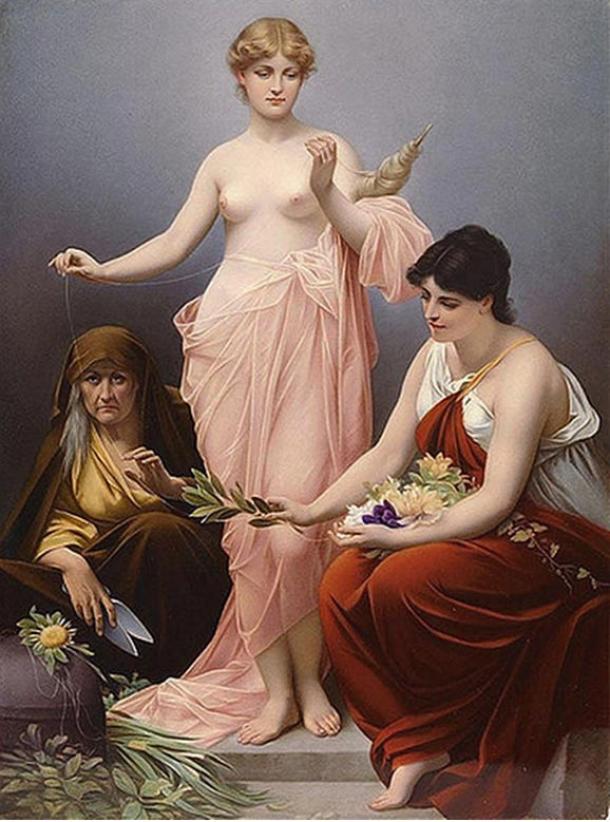
-
Were the three goddesses of fate who personified the inescapable destiny of man: At the birth of a man, the Fates spinned out the thread of his future life, followed his steps, and directed the consequences of his actions according to the counsel of the gods.
-
It was not an inflexible fate; Zeus, if he chose, had the power of saving even those who were already on the point of being seized by their fate.
-
They did not abruptly interfere in human affairs but availed themselves of intermediate causes, and determined the lot of mortals not absolutely, but only conditionally, even man himself, in his freedom was allowed to exercise a certain influence upon them.
-
As man's fate terminated at his death, the goddesses of fate become the goddesses of death, Moirai Thanatoio.
-
Were among the eldest goddesses in ancient Greek mythology.
-
Their number became fixed at three: Clotho (spinner), Lachesis (allotter) and Atropos (unturnable).
-
Their name means "Parts." "Shares" or "Alotted Portions."
-
At the birth of each man they appeared spinning, measuring, and cutting the thread of life.
-
Klotho (Clotho), the "the Spinner," who spun the thread of life; the spinner, was the youngest of the three Fates; she spun the thread of destiny with a distaff, determining the time of birth of an individual; she carries a spindle or a roll (the book of fate)
-
Lakhesis (Lachesis), "the Apportioner of Lots", who measured it; Lachesis measured the thread length to determine the length of life; carries a staff with which she points to the horoscope on a globe.
-
Atropos (or Aisa), "She who cannot be turned," who cut it short; cruel Atropos cut the thread of life, determining this way the time of death; a scroll, a wax tablet, a sundial, a pair of scales, or a cutting instrument.
-
They were independent, at the helm of necessity, directed fate, and watched that the fate assigned to every being by eternal laws might take its course without obstruction.
-
The gods and men had to submit to them, although Zeus's relationship with them is a matter of debate: some sources say he is the only one who can command them, yet others suggest he was also bound to the Fates dictates.
-
Were either daughters of Zeus, the Lord of the gods, and Themis, the goddess of justice, or were created by goddess Nyx without the intervention of man.
-
Were described as ugly, old women and sometimes lame.
-
They were severe, inflexible, and stern.
-
At other times the three were shown with staffs or sceptres, the symbols of dominion, and sometimes even with crowns.
September 22, 2016
Is there a connection or symbolism in putting a piece of straw in your mouth and death?
Several connections to the 'straw' in legend and common vernacular:
-
The straw that broke the camel's back
-
The final limit of capacity, including patience. An Arabian anecdote told of a camel whose owner loaded the beast of burden with as much straw as possible. Not satisfied with the staggering load he had put on the camel, the owner added just one last piece of straw. Even that one wisp was too much, and the animal collapsed with a broken back,leaving the owner with no way to take his goods to the market. The story is a parable for all the times you've been repeatedly irked until you can't take it anymore and you explode. Source
-
-
Straw Death
-
An inglorious end while lying on a mattress filled with straw rather than in the heat of battle, in old Viking culture. Source
-
-
The life-saving straw (救命稻草)
-
In Chinese the idiom "the life-saving straw"(救命稻草) often has the meaning that people who are drowning would hold on to anything they could even if it is as useless as a straw but in the meantime, a straw might be what a drowning man need to keep his hope up to be able to survive. Source
-
How do you treat people with amnesia? What kinds of amnesia are there?
There is no specific cure for amnesia, but treatment of amnesia and memory loss include:
- Cognitive therapy using speech or language therapist can be of help in patients with mild to moderate memory loss.
- In many cases mild memory loss may persist. Treatment of underlying medical conditions leading to memory loss.
This includes treating low thyroid function, liver and kidney disease. Treatment of stroke, head injury, blood clots in brain and bleeding within the brain may be used to reduce memory loss due to these causes.
- Treatment of concomitant psychiatric illness. This includes treating depression, anxiety, bipolar disorder and schizophrenia.
- Treating alcoholism and preventing alcohol and illicit drug abuse.

Types of Amnesia
There are six different types of amnesia depending on the causes and the nature of disease progression.
a) Anterograde amnesia
Anterograde amnesia happens as a result of brain trauma that involves the hippocampus, fornix, or mammillary bodies. Here the patient is unable to recollect events, that occur after the onset of the amnesia, for more than a few minutes.
b) Retrograde amnesia
In this form of amnesia the affected individual will be unable to recollect events that occurred before the amnesia set in. The condition is caused either by disease or a brain injury especially in areas linked with episodic memory—the hippocampus and the median temporal lobes.
c) Dissociative amnesia
Dissociative amnesia is a condition in which the patient is unable to remember vital personal information in a way that has nothing to do with normal forgetfulness. It is commonly seen in individuals who have witnessed a violent crime or a grave accident and does not occur due to a medical illness.
Subtypes include –
- Generalized amnesia- When the amnesia involves the person’s whole life.
- Localized amnesia - no memory of a specific traumatic event that took place
- Selective amnesia- remembers only selective parts of events that occurred in a defined period of time.
- Systematized amnesia – memory loss regarding a specific category of information.
d) Infantile amnesia
The inability to recall events from early childhood is known as infantile amnesia. It is assumed that this happens due to immaturity in certain areas of the brain in the very early stages. Today, this state is seen as an intricate part of human development as it is now clear that memories begin to form only when certain parts of the brain are well formed.
e) Transient Global Amnesia (TGA)
In this type of amnesia there is temporary impairment in an otherwise healthy person's memory.
During this period of amnesia, the person is unable to recall recent occurrences, visuals or verbal information for more than a couple of minutes. Patients retain their identities, immediate recall abilities, distant memories, attention span, language function, visual-spatial and social skills. Causes of TGA remain controversial. They include –
- Emotional stress
- Strenuous physical exertion
- Transient ischemic attack, a "mini-stroke."
- Basilar artery migraine
f) Wernike-Korsakoff's psychosis –
This amnesia is a progressive disorder caused by extended alcohol abuse. It is usually accompanied by neurological dysfunctions such as loss of co-ordination during movement or a feeling of numbness in the fingers and toes.
- Source
In King Lear, is Cordelia alive or dead when the quote about forgiveness is spoken?
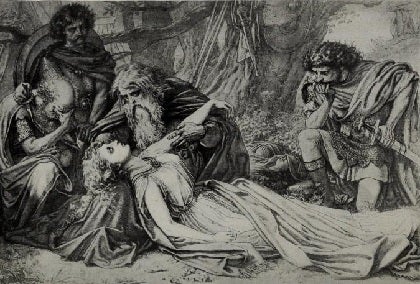
King Lear asks Cordelia for forgiveness while she is still alive. Cordelia returns to Britain as the Queen of France to battle for her father, having been disinherited and banished by him initially. While the country is in turmoil, Lear has ended up lost in nature fighting his madness. Once he is located by Cordelia's men, he is brought to the French Camp to get medical help. When he comes to his senses, Lear and Cordelia are reunited, and Lear has the opportunity to ask for her forgiveness. Cordelia says there is no need, understanding his fragile state, letting him know there is nothing to forgive as a testament of her true love. Soon after, they become prisoners and are taken to the English Camp. On their way to prison, Lear pleads with Cordelia to accept imprisonment because this means they get to remain together. He is hopeful and disillusioned, and he envisions for the two of them a happy place in prison because together they will outlive their capturers, spending their days laughing and forgiving each other. Lear fantasizes a happy ending before he is faced with the ultimate tragedy. Cordelia is hanged, and Lear dies of grief.
September 20, 2016
What philosophers were popular during the 1940's?

In the 1940s, the major European philosophical movement was Existentialism. Existentialism challenged the traditional view of the relationship between the essence (the nature) of a thing and its existence (the fact of its being). The traditional view was originated by Plato, who claimed the essence, the nature of what a thing is, must necessarily define the things existence. For example, a triangle can only exist if it fits the criteria that defines a triangle. Existentialism separated humans from this essence/existence relationship. Instead it was thought that a person first exists and then defines their essence through choices. Each person has their own unique essence, developed through unique choices, so no two people are the same. This essence isn’t fixed. This movement however, never caught on in the United States.
Western Philosophy had its own movement of Logical Empiricism. Logical Empiricism focused on Verificationism. Verificationism was the belief that only claims and statements that are empirically verifiable (can be verified through your senses) have any cognitive meaning.
Some Major Participants:
| Existentialism | Logical Empiricism |
|---|---|
| Karl Jaspers | A.J. Ayer |
| Martin Heidegger | Rudolf Carnap |
| Albert Camus | Karl Popper |
| Miguel de Unamuno | Hans Reichenbach |
| Lev Shestov | Walter Dubislav |
Sources:
- Creath, Richard, "Logical Empiricism", The Stanford Encyclopedia of Philosophy (Spring 2014 Edition), Edward N. Zalta (ed.).
- Crowell, Steven, "Existentialism", The Stanford Encyclopedia of Philosophy (Spring 2016 Edition), Edward N. Zalta (ed.).
- Preston, Aaron. "Analytic Philosophy." Internet Encyclopedia of Philosophy. N.p., n.d. Web. 23 Sept. 2016.
- Ryan, James Gilbert., and Leonard C. Schlup. Historical Dictionary of the 1940s. Armonk, NY: M.E. Sharpe, 2006. Print.
- “verifiability principle”. Encyclopaedia Britannica. Encyclopaedia Britannica Online. Encyclopaedia Britannica In., 2016. Web. 23 Sep. 2016.
September 17, 2016
What is “The Jitterbug”? Specific interest in rehearsal on the cultural background, steps to the dance, and origins to the dance.
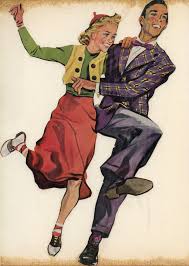
The Jitterbug was a fast dance popular in the 1940's, performed chiefly to swing music, and a nickname for a later version of the popular 1920's dance, the Lindy Hop.
The Lindy Hop used eight (not the usual four) beats of music to complete a figure. Popular in the late ’20s, it originated in 1927 after Lindbergh's flight to Paris, when some young black dancers began improvising eccentric off-beat steps in a corner of the Savoy Ballroom in Harlem. The couple would start together in ballroom position, then the man would fling his partner away and improvise on a “solo hop,” reminiscent of Lindbergh's then-recent flight across the Atlantic.
Jitterbug, which was popular in the 1930's, speeded the dance up, says Craig Hutchinson of Potomac Swing (emphasizing that no two people will agree on these definitions), using six beats of music for each figure. Both the lindy and jitterbug used acrobatics, aerials (e.g., flipping the woman over the man’s back), and breakaways (where the partners break apart from each other and do different things). “In the forties, the dance schools tamed the jitterbug and Lindy Hop — took out all the bumps and grinds, squats and aerials — and the music changed, too. They started playing swing music and came up with a much smoother, more sophisticated form of dance called swing."
Deleted Jitterbug Scene from Wizard of Oz
A humorous scene showing Jerry Lewis doing the Jitterbug
Here's a step-by-step tutorial on How to jitterbug
An informative History of the Steps
A discussion that the Lindy Hop/Jitterbug are the same thing
A fantastic example of Modern Lindy Hop
How are the Furies represented in Greek Mythology?
The Furies, or Erinyes, were underworld figures of vengeance described in The Iliad as "those who beneath the earth punish whosoever has sworn a false oath."
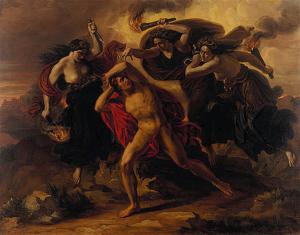
The Furies were born from the blood from the genitals of the castrated Titan Uranus. Most tales mention three Furies: Allecto (endless), Tisiphone (punishment), and Megaera (jealous rage). Usually imagined as monstrous, foul-smelling hags, the sisters had bats' wings, coal-black skin, and hair entwined with serpents. They carried torches, whips, and cups of venom with which to torment wrongdoers. The Furies could also appear as storm clouds or swarms of insects. Source
Without mercy, the Furies would punish all crime including the breaking of rules considering all aspects of society. They would strike the offenders with madness and never stopped following criminals. The worst of all crimes were patricide or matricide, and first and foremost, the Furies would punish this kind of crime.
They would also be the guardians of the law when the state had not yet intervened or did not exist, or when the crime was a crime of ethics and not actual law . For example, they would protect beggars and strangers, punish those who stole the birds' young and even look out for the dogs.
Horrible to look at, the Furies had snakes for hair and blood dripping from their eyes. They changed into the Eumenides, protectors of the suppliant, after Athena had made them merciful sparing Orestes, whom they had stalked for a long time after the murder of his mother and her lover.
From these beings we have the words "furious" and "infuriated".Source
How was Hades perceived by people in Greek Mythology – did he have any good characteristics?

Further, this useful page gives us plenty of information on the characteristics that Hades was known for.
Can the dramaturgical team research the influence Sarah Ruhl’s father had on writing this play and report on it for Tuesday’s rehearsal?
Sarah’s father, Patrick Ruhl, significantly influenced her love for words and music, as well as the writing of Eurydice. He was an avid Jazz listener and reader who worked in marketing for toys. When Sarah was five years old, her father established a ritual with her sister Kate and her to sort through the epidemiology of words over pancake brunches. They were a close knit family who vacationed together and shared their affinity for the arts. Sadly, in 1994 Patrick died of cancer, while Sarah was in her first year of university studying English literature with the intention to become a poet. His final days were spent together as a family, where they found ways to escape together using imagination, pretending they were on their childhood vacations at Cape Cod. Her father found every opportunity to graciously make his family laugh and take the attention off of his harsh reality. Sarah struggled with grief over the loss of her father, and writing for her was an antidepressant. Eurydice includes the father character, as a way for Sarah to continue having conversations with her passed father. Sarah married her partner after seven years of courtship, almost 10 years after her father passed away, and two years after she completed writing Eurydice. It is evident that Eurydice is a deeply personal play, though her other work is also well connected to her family life.
In Movement 2, scene 9, there are references to Greek words. Are the definitions provided in the text accurate?
The three words referenced in the text are: OSTRACISE/OSTRAKON
PERIPATETIC
DEFUNCT
Ostracize, v.
Origin: A borrowing from Greek. Etymons: Greek ὀστρακίζειν, -ίζειν. Etymology: < ancient Greek ὀστρακίζειν to banish from a city by ostracism < ὄστρακον ostracon n. + -ίζειν -ize suffix. Compare French ostraciser (1829; compare earlier use as noun of past participle ostracisé an exile, 1772). Compare earlier ostracism (n)
1. trans. To banish; to exclude from favour, or from a society or group; to refuse to speak to or acknowledge. Usu. in pass.
Ostracism, n.

Origin: A borrowing from Greek. Etymons: Greek ὀστρακισμός, ὀστρακίζειν, -ισμός, Latin ostracismus, French ostracisme. Etymology: < ancient Greek ὀστρακισμός (in sense 1) < ὀστρακίζειν ostracize v. + -ισμός -ism suffix, perhaps via post-classical Latin ostracismus (a1536 in Erasmus; already in classical Latin in Nepos, but usually written in Greek letters) or Middle French, French ostracisme (1535 with reference to ancient Greece (compare sense 1), 1667 in extended sense (compare sense 2)). Compare also Spanish ostracismo (1540). Compare slightly earlier ostracy n.
Ancient Greek ὀστρακισμός was so called because the banishment was effected by voting with potsherds or tiles (ὄστρακα , plural of ὄστρακον ostracon n.), on which the name of the person whom it was proposed to banish was written. In Athens and other ancient Greek cities: the custom or practice whereby a citizen whose power or influence was considered dangerous to the state was sent into exile for ten (later for five) years; (also) a vote to effect such a banishment. Hence, more generally: temporary banishment, exile, or expatriation.
"ostracize, v." OED Online. Oxford University Press, September 2016. Web. 18 September 2016.
Peripatetic, n. and adj.
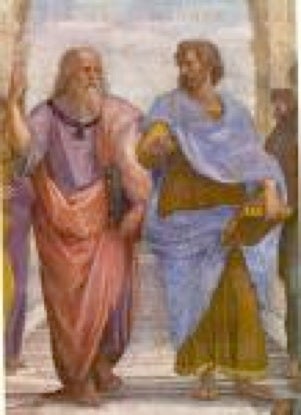
Origin: A borrowing from Latin. Etymon: Latin peripatēticus. Etymology: < classical Latin peripatēticus of or belonging to the peripatetic (Aristotelian) school of philosophy, philosopher of this school < Hellenistic Greekπεριπατητικός given to walking about, especially while teaching or disputing, especially with reference to Aristotle and his followers < ancient Greek περιπατεῖν to walk about, to walk up and down while teaching ( < περι- peri- prefix + πατεῖν to tread, to walk: see paturon n.) + -τικός , suffix forming adjectives from verbs. Compare Middle French, French péripatétique (1372 as adjective, 1531 or earlier as noun). Compare peripatos n.
A. n. 1. Philos. Usu. in form Peripatetic. A student or follower of Aristotle, an Aristotelian; the sect of such followers; (more generally) a scholastic philosopher.
2. Chiefly humorous. A person who walks about; a traveller; an itinerant dealer or trader.
3. In pl. Movements to and fro or from place to place.
"peripatetic, n. and adj." OED Online. Oxford University Press, September 2016. Web. 18 September 2016.
Defunct, adj. and n.

Etymology: < Latin dēfunctus discharged, deceased, dead, past participle of dēfungī to discharge, have done with, < de- prefix 1f + fungī to perform, discharge (duty). Perhaps immed. < French defunct (Cotgrave 1611), now défunt.
A. adj. a. Having ceased to live; deceased, dead.
b. fig. No longer in existence; having ceased its functions; dead, extinct.
B. n. the defunct: the deceased; hence, with pl. (rare), one who is dead, a dead person.
"defunct, adj. and n." OED Online. Oxford University Press, September 2016. Web. 18 September 2016.
September 15, 2016
Research requested on neurological pathways in relation to “ghost limbs”.
A ghost limb, or more commonly, phantom limb, is the phenomenon of a person who has lost a limb due to trauma or surgery feeling sensations of pain in the area where the lost limb should be. This may extend from mild feelings of itchiness to excruciating pain, wherein their brain still processes the absent limb as present.
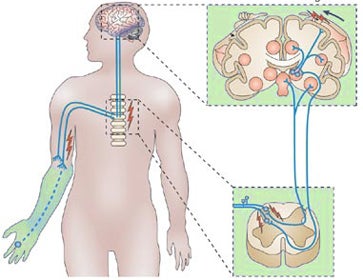
We have uncovered the following points of research on 'phantom limbs':
General Overview:
Melzack, Ronald. "Phantom Limbs." Scientific American (April 1992), 266: 120-125 (requires TRELLIS login)
"The Phantom Touch" on Scholarpedia: the Peer-Reviewed Open-Access Encyclopaedia.
Arizona Neuromodulation Center: Phantom Limb Pain.
Neurological Pathways:
Aglioti, Salvatore, et al. "Phantom Lower Limb as a Perceptual Marker of Neural Plasticity in the Mature Human Brain." Proceedings of the Royal Society B. 22 March 1994. Volume 255, issue 1344.
Bittar, Francis G. et al. "Deep brain stimulation for phantom limb pain." Journal of Clinical Neuroscience. May 2005 Volume 12, Issue 4, Pages 399–404.
Halligan, Peter W. "Phantom limbs: The body in mind." Cognitive Neuropsychiatry. 7:3, 2002: 251-269.
Murray, Craig D. Amputation, Prosthesis Use, and Phantom Limb Pain: An Introduction. New York: Springer, 2010.
Ramachandran, V.S. and William Hirstein. "The Perception of Phantom Limbs." Brain (1998) 121: 1603-1630.
In Movement 1, scene 2, page 15, are the items mentioned by Father in the script words of advice from the 40s or 50s?
The following is the section in question.
Cultivate the arts of dancing and small talk.
Everything in moderation.
Court the companionship and respect of dogs.Grilling a fish or toasting bread without burning requires singleness of purpose, vigilance, and steadfast watching.
Keep quiet about politics, but vote for the right man.
Take care to change the light bulbs.
Continue to give yourself to others because that’s the ultimate satisfaction in life - to love, accept, honour, and help others.
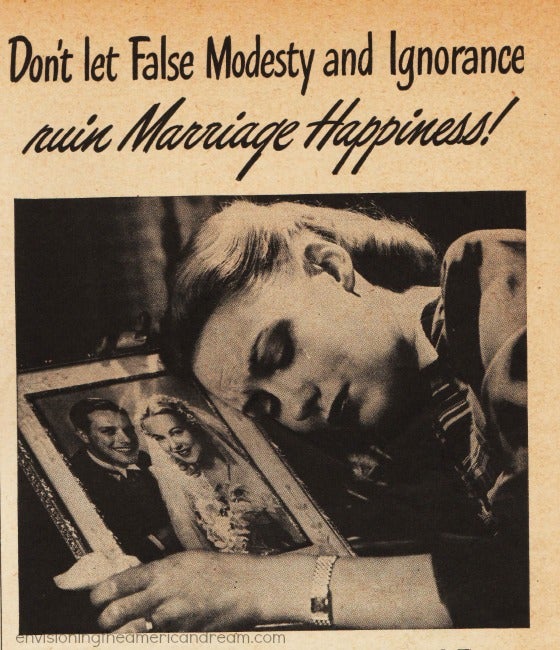
We did find some amusing links to advice from the 1950's, such as this and this, the "Good Wife's Guide & Advice for Young Brides." This disturbing '7 Tips for Keeping Your Man' has advice of the type that it feels clear that Ruhl's sensible advice is a modern construct, rather than being based on phrasing from the 1940's or 1950's.